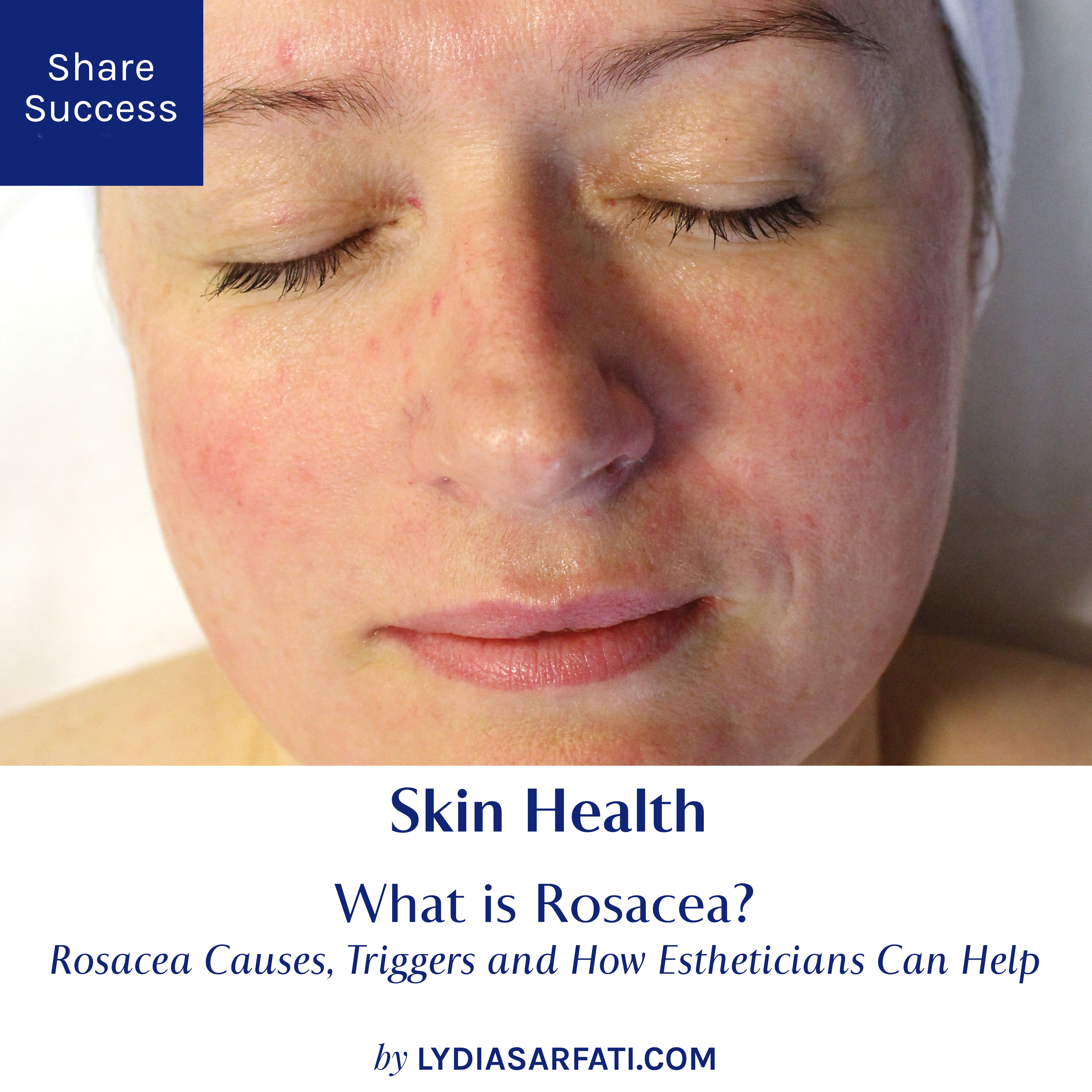
The National Rosacea Society has designated April as Rosacea Awareness Month.
Many clients come into the salon or spa with skin concerns that may or not be rosacea. While estheticians cannot diagnose or treat rosacea-prone skin, there are many ways that estheticians can help address the appearance of visible signs of skin sensitivity.
Learn about rosacea, what causes rosacea, what triggers rosacea, and what an esthetician can do to help clients whom are affected by this skin condition improve the look of their skin.
What is rosacea?
According the National Rosacea Society, rosacea affects an estimated 16 million people in the United States and 45 million people around the world.
Rosacea is often mistaken for acne (and mistreated as such) and can cause tiny red pimples, dry skin and fine red lines.
Rosacea produces periodic flare-ups with symptoms that come and go.
Interesting enough, while this skin condition is more frequent among women, it is more severe among men.
What causes rosacea?
The causes of rosacea are not fully understood.
Although nothing has been conclusively proven through research, theories surrounding rosacea causes have ranged from autoimmune responses to bacteria, to a mite (demodex) that lives in high numbers on rosacea sufferers, to cathelicidin, a protein that usually protects the skin from infection.*
Source: https://www.ncbi.nlm.nih.gov/pmc/articles/PMC5134688/
What triggers rosacea?
While causes aren’t clearly known, triggers of breakouts, according to the National Rosacea Society, are well documented:
Dietary triggers
There is a long list of dietary no-nos. These include:
- Alcohol – Specifically red wine, beer, bourbon, gin, vodka and champagne appear to be the biggest culprits.
- Dairy Products – Sour cream, yogurt and cheese should be avoided.
- Chocolate
- Citrus Fruits
- Soy Sauce
- Spicy dishes
- Thermally hot foods
Other triggers
- Extreme temperatures
- Intense exercise
- Sunlight
- Stress
- Emotions such as anger or embarrassment
- Drugs – Corticosteroids like prednisone, or compounds that dilate blood vessels such as blood pressure medications.
What can people with rosacea do?
While there is no cure for rosacea, modern medicine has developed effective treatments once a proper diagnosis has been given. With changes to diet, lifestyle, and appropriate skincare, outbreaks can be reduced and kept to a minimum.
Is there a cure for rosacea?
While there is no cure for rosacea, medical doctors can prescribe effective treatments once a proper diagnosis has been given.
With changes to diet, lifestyle, and appropriate skincare, outbreaks can be reduced and kept to a minimum.
What should estheticians look out for as the telltale signs of rosacea?
For an esthetician, it’s imperative to be sensitive to the symptoms of rosacea, as well as a client’s family history, lifestyle, and medical conditions that may contribute to the skin condition.
The visible signs of rosacea are red facial skin, marked by easy blushing, which sufferers may not at first think is a skin disorder.
While estheticians cannot provide a medical diagnosis, they have the skills to recognize this condition during Stage 1 and perform a facial to help soothe the skin’s appearance and reduce the appearance of redness.
There are three stages of rosacea:
STAGE 1:
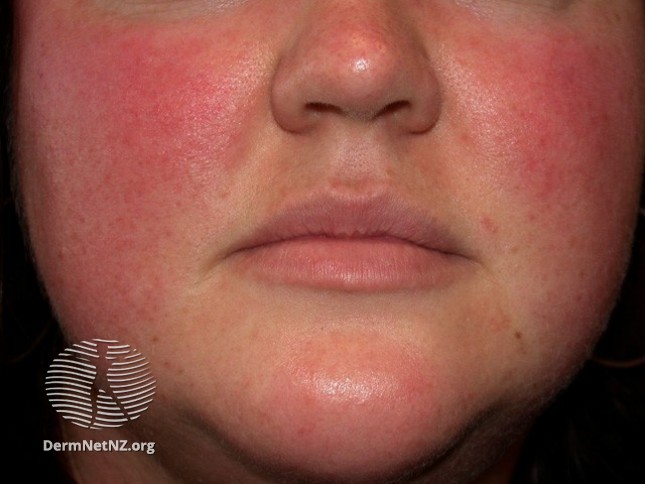
- The first stage is the appearance of red skin, in which the sufferer complains of burning, itching skin that is particularly sensitive after application of the irritating cosmetics, sunscreens or scents.
- Small red veins may appear.
- Bumps and pimples may accompany the outbreak, which last from hours to days.
STAGE 2:
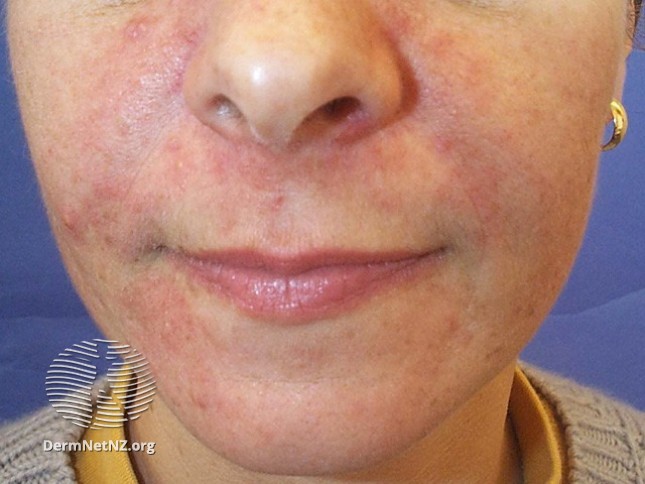
- This stage features inflamed papules and pustules.
- These breakouts can last for several weeks.
- Pores become enlarged and damage from the sun can cause distinct scarring.
- They often cover the neck, throat and behind the ears, and can even cover the back.
STAGE 3:
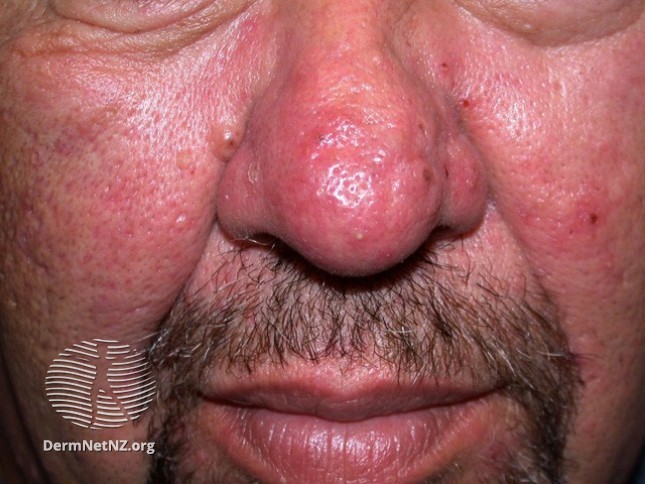
- This is a far more serious stage, characterized by large, inflamed nodules on the cheek and nose, skin that is swollen, rough skin with enlarged pores that might be compared to the skin of an orange.
- The nose is often one of the first and most prominent areas affected – the rhinophyma associated with W.C. Fields.
Rosacea often also involves the eyes. In fact, the problem can begin with the eyes and is another often-misdiagnosed problem. Symptoms include dry, irritated, swollen and red eyelids, conjunctivitis and inflammation of the cornea and iris.
What should estheticians do in the spa for clients with rosacea?
As stated, as it is a medical condition, estheticians cannot diagnose or treat rosacea. However, I have found in over 47 years of my experience as an esthetician that we can certainly help clients who are rosacea-prone improve the appearance of their skin by utilizing products and treatments formulated for sensitive to hypersensitive skin.
The Repêchage Red-Out® Facial, and the at home Red-Out® products, for example, which were launched in 2015, were expressly designed to help improve the appearance of hypersensitive skin. This facial and the at-home products, made with hydrating and cooling seaweed, can help reduce the appearance of redness in sensitive skin.
When providing facials, I also recommend estheticians:
- Avoid hot steamers, brushing, scrubs, microdermabrasion, harsh peels, aromatherapy and perfumes.
- Do not massage the skin with your hands as this can create flushing.
- Massage with a Silver Ball Massager that is cool to the touch and can help provide the correct pressure. (Watch our Facial Massage for Sensitive Skin video)
What is the recommended at-home regimen for dealing with rosacea?
While an esthetician can’t prescribe or claim that they can cure rosacea, they can help the client and provide recommendations to help calm and sooth the appearance of their skin.
In my experience, with clients, even if they are under a dermatologist’s care and are taking topical drugs, a gentle face wash, such as Red-Out® Cleanser and serum, such as Red-Out® Serum, seem to improve the appearance of sensitive skin as reported by our clients.
Other skin care products include Hydra 4® Tonic, Hydra 4® Moisturizing Day Cream and Hydra 4® Mask.
Remind your clients to avoid using scrubs, wash clothes and hot water in their cleansing regimen. This will help calm the appearance of their skin.
*This blog is for informational purposes only and is not intended as medical advice, treatment or diagnosis. Always seek the advice of your doctor or health provider with any questions or concerns you may have about a medical condition.
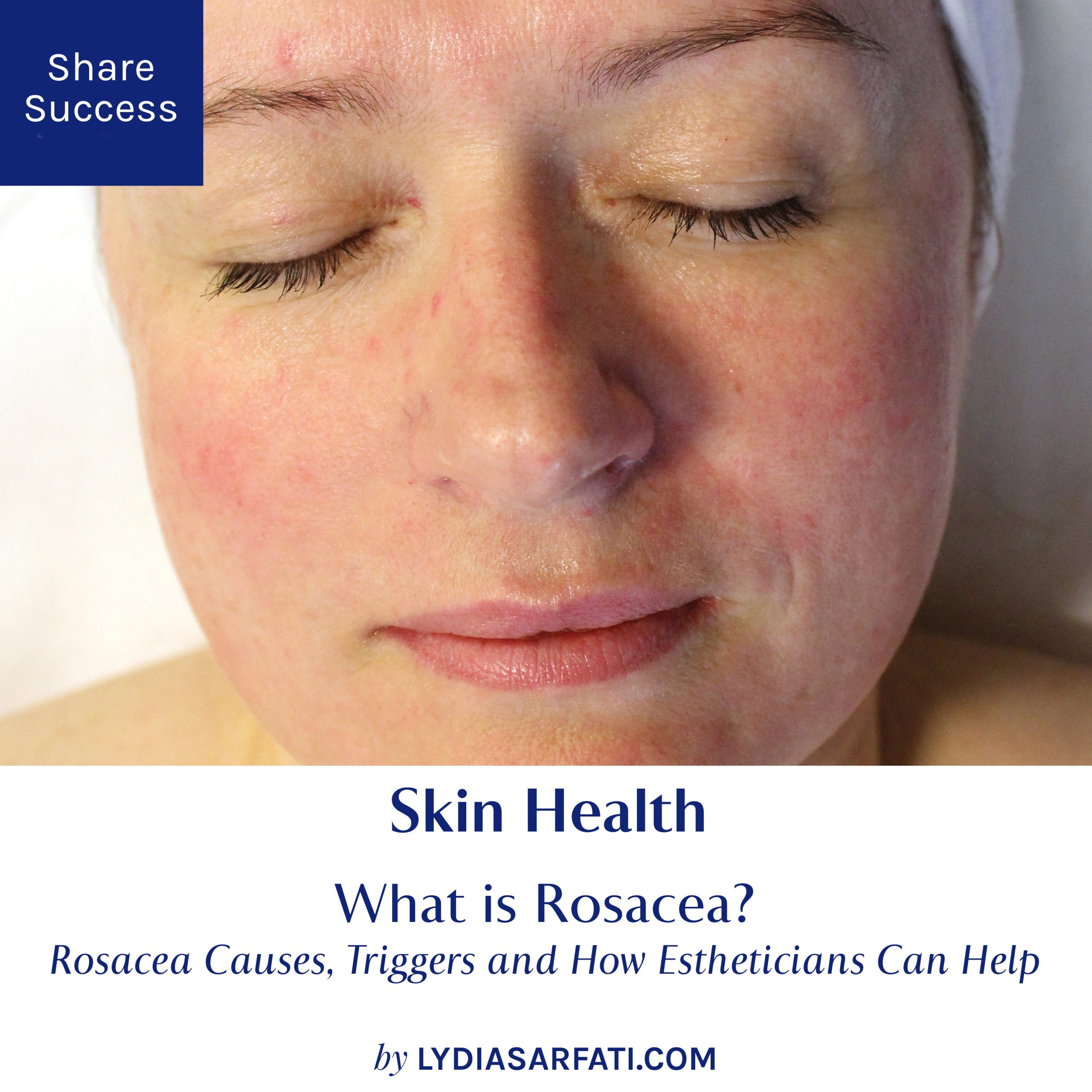
I strongly believe that when it comes to skincare conditions, you have to seek out professional help. Even with at-home remedies, a specialist can recommend you the right treatments to help control your condition.